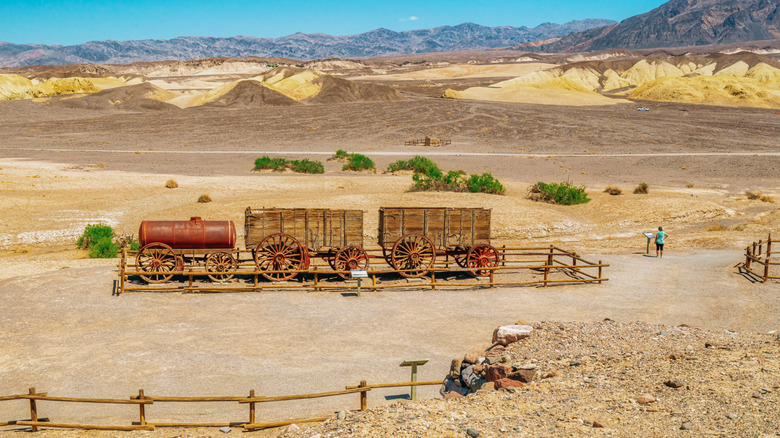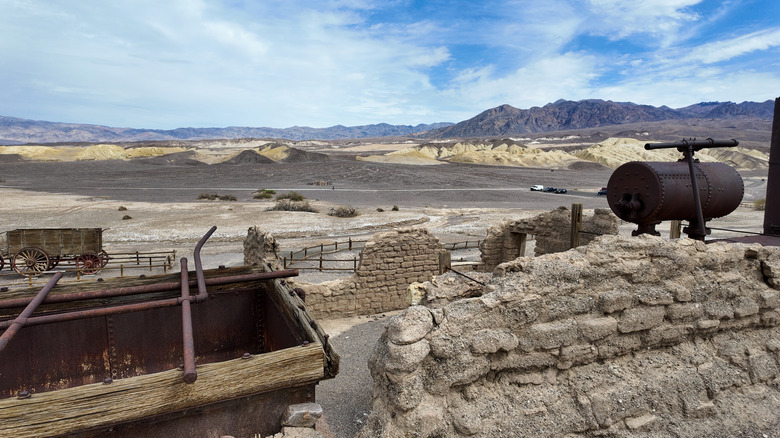An Abandoned Frontier Location In California Is Now A Hidden Gem Often Called An 'Outdoor Museum'
Hear the words "Death Valley" and it's likely that images of inhospitable, sun-scorched deserts spring to mind — this is one of the few national parks you'd be wise to avoid visiting in the summer because of the extreme heat, after all. But this boiling corner of the U.S.A. — the most boiling corner of the U.S.A, in fact — remains an enthralling stop for travelers in search of true frontiers. You can come to stand on the lowest-altitude point in North America, cozy up in the gateway village of Stovepipe Wells, or delve into unique mining history at the open-air museum that is the Harmony Borax Works.
A lot of people don't know that Death Valley underwent its very own mining boom in the mid-1800s. As the rest of California went mad for gold, prospectors here had their eye on rich mineral deposits known as borax, and the Harmony Borax Works was one of the first commercial mining ventures in the region. It started life in 1883, but was abandoned by the turn of the century. Today, visitors are welcome to walk amid the remains of the operation, which still stand between the canyons and dust hills in the heart of the national park.
The good news is that these old borax mines don't demand a huge detour off the main driving routes through Death Valley. In fact, you'll find them just off the road, only a few minutes' drive north of Furnace Creek — the area's main campground and visitor center. More generally, you're looking at upwards of two hours to get here from Las Vegas, which is also home to the nearest major airport, and just under two hours from the iconic Highway 395 on the California side.
Step into an outdoor museum at the Harmony Borax Works
Planning a visit to the Harmony Borax Works? Prepare to be transported back in time to an age when borax ore was pulled from the mountains of Death Valley before being processed right here on-site. At its height, the works employed an estimated 40 people who were tasked with collecting the mineral, boiling it, refining it, and then undertaking the mammoth job of transporting it a whopping 165 miles across the Mojave Desert.
Take the Harmony Borax Trail, a quarter-mile loop around the area, to uncover the rich history. It's packed with interpretive signs that reveal what life was like at the camp during the 1880s, and how the precious mineral was picked and prepared. You'll also see the remains of an iconic 20-mule-team — a long caravan of mules and donkeys that was designed to transport the finished borax out of the desert. There are also half-ruined adobe buildings once used as a refinery.
The whole site is free to enter, but you will have to purchase a pass to get into the Death Valley National Park itself. It should take around 30 minutes to complete the interpretive walk. That said, remember that it gets extremely hot in these parts, so walking anywhere after 10 a.m. isn't recommended.

